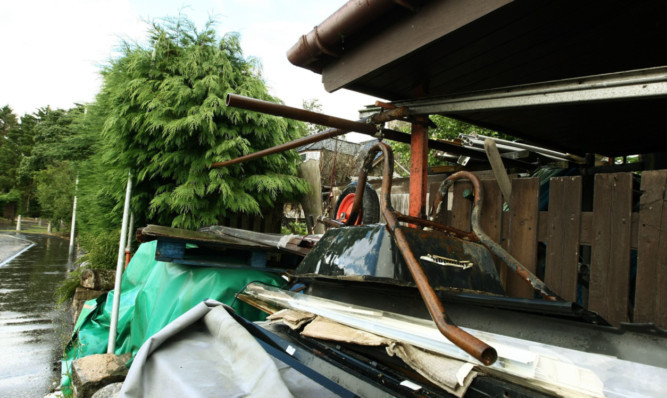For nearly a decade it has been the blight of an Angus village and a costly case on the enforcement books of the council’s planning department.
And it continues to be hidden behind overgrown hedges and detritus of the kind which earned it the tag of Steptoe’s yard.
But as the authority faces up to the fact it is unlikely to see a penny of the £30,000-plus spent clearing up the Broomwell Gardens property in the quiet community of Monikie, north of Dundee, a call has gone out to ensure the bulldozers do not move in on a cottage which has an important place in Scots music heritage.
A century before the garden was filled with the building materials, boats and cars which would put the house owner at loggerheads with neighbours and Angus Council, the old stone cottage was home to the man known as Scotland’s ‘Strathspey king’ legendary fiddler James Scott Skinner.
The courts have approved the sale of the traditional music maestro’s one-time abode to pay off debts in the long-running wrangle, but despite relief in the village that the saga may finally be at an end, some say the prospect of demolition would lead to the shameful loss of a link to the past worth celebrating.
The son of a Deeside dancing master, James Scott Skinner was born 170 years ago this month in the village of Banchory, from where he would later travel the short distance to Balmoral to meet Queen Victoria’s request of passing on his own dancing talents to the staff of the royal household.
He went to Connell’s School in Princes Street, Aberdeen, before joining Dr Mark’s Little Men, a boys’ touring group whose performances included a royal command event before Queen Victoria in 1858.
A dancing tutor for many years, Skinner devoted himself to the fiddle after returning to Scotland and made his first cylinder recordings in 1899, a few years before he married his second wife in the cottage at Monikie.
In all, more that 600 of his compositions were published, with tunes penned on scraps of paper and given to friends, now treasured pieces in collections including the Angus Archives and the Banchory Museum.
One villager said: “The connection of the man known as the Strathspey king is something Angus should be proud of, not try to get rid of by knocking down the house where he once lived.”
Angus archivist Fiona Scharlau said the area’s collection of Scott Skinner material drew regular attention, particularly from academics.
“We know that he taught a lot of people whilst he was in this area and people must have been very keen to learn from someone of his stature,” she said.
